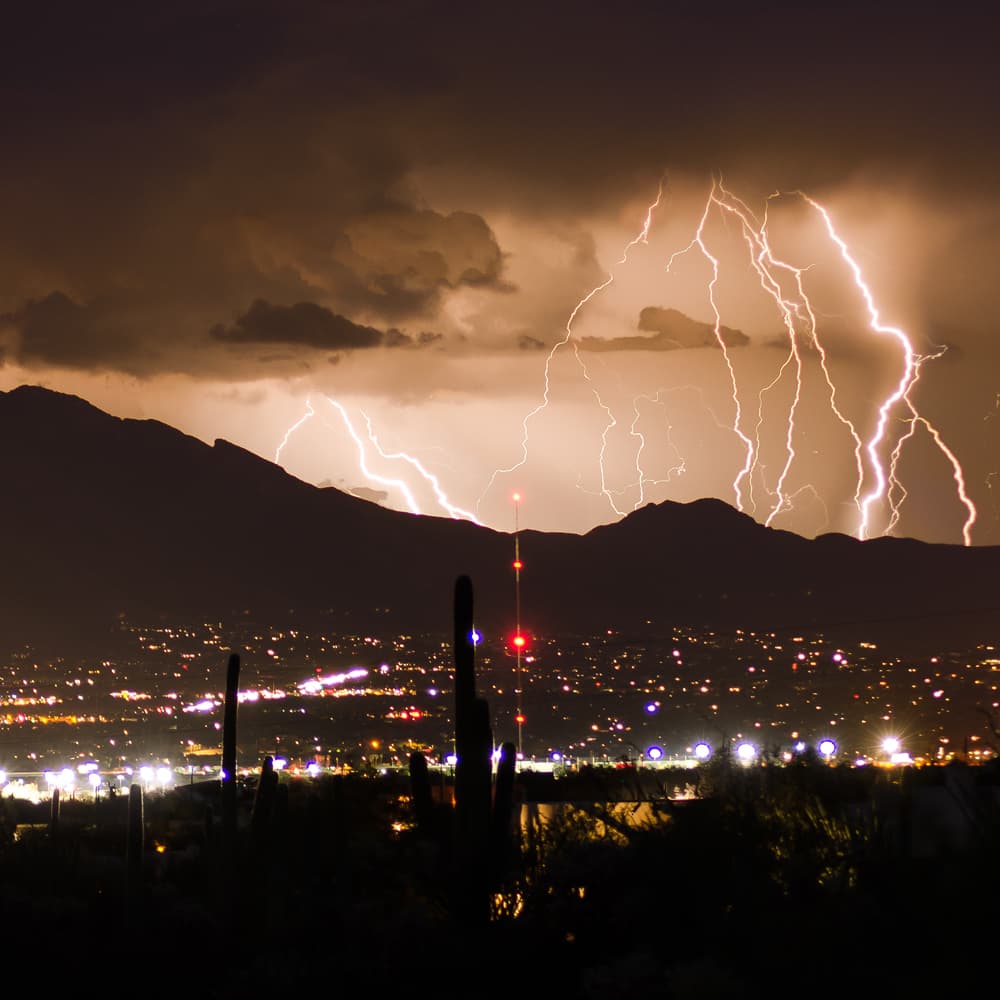AMWUA Blog
BY: AMWUA StaffProtect Your Landscape During Extreme Weather

Extreme weather can wreak havoc on your plants and overall landscape, whether it is intense heat or the heavy rains and winds that accompany monsoons. But with the proper care, your plants can continue to thrive during this severe heat, and be protected from unwanted damage from winds and rain.
Adjust Watering
Plant watering should vary from month to month. Regularly adjusting your irrigation schedule is an easy way to save water and money and helps ensure your plants get the right amount of water to thrive. Irrigation frequency should be adjusted at least four times a year to account for differences in seasonal watering needs. When the temperatures rise, so do some of your plants' needs. You want to make sure to water slowly and deeply to ensure the moisture seeps far into the soil. Proper watering is essential because the heat and wind will dry the surface of the soil quickly.
Beyond adjusting the frequency of your watering, it's also essential to change the time of your watering. The summer heat can be stressful for plants, so watering them early in the morning is crucial. Temperatures and the evapotranspiration rate are at their lowest during this time, meaning your plants will be able to soak in more of that precious resource rather than losing it to the air via evaporation. If you water in the middle of the day water will be lost to evaporation.
Check your irrigation system
Many homeowners trust their yard to an automated irrigation controller. Electrical storms can get your irrigation timer off schedule or even set your controller back to a default schedule or also cause irreparable damage. While the controller may be reliable, your pipes, sprinkler heads, and drip lines are less so. Drip lines are particularly susceptible to weather. High temperatures, dust, and rain can clog, crack and break emitters and lines. In these situations, when your reliable irrigation controller comes on, plants don't get watered or gallons of wasted water pools in your yard. Check sprinkler heads for damage, including clogs that could be caused by grass and leaves. Regularly walk your yard while the irrigation system is running and be prepared to spot and stop any leaks. AMWUA's Smart Home Water Guide can help.
Utilize the rainwater We are optimistic that we will still see rain in the Valley. So when it does happen, and if it rained about a half-inch in your neighborhood, you could turn off your watering system. That saves you money on your water bill and saves water for all of us. Better yet, you also can contour your yard to help your plants and trees get the most out of each storm. Sunken gardens and deep wells around your trees help to slow, spread, and to sink rainwater instead of allowing it to run off your property. It's the simplest rain harvesting technique and takes nothing more than a shovel, a little energy, and thoughtful placement of plants. Consider this - one inch of rain on a 1,000 square-foot roof produces 600 gallons of runoff.
We are optimistic that we will still see rain in the Valley. So when it does happen, and if it rained about a half-inch in your neighborhood, you could turn off your watering system. That saves you money on your water bill and saves water for all of us. Better yet, you also can contour your yard to help your plants and trees get the most out of each storm. Sunken gardens and deep wells around your trees help to slow, spread, and to sink rainwater instead of allowing it to run off your property. It's the simplest rain harvesting technique and takes nothing more than a shovel, a little energy, and thoughtful placement of plants. Consider this - one inch of rain on a 1,000 square-foot roof produces 600 gallons of runoff.
Prune your trees less
Resist the urge to trim and prune your landscape plants and trees during summer. Plants form their natural shade canopy with leaves from the outer branches. Pruning renders the plant or tree vulnerable to the scorching sun rays. And proper pruning is also the most crucial part of keeping your trees healthy enough to withstand a storm. The less you prune a tree, the stronger it will grow.
Support your trees
Swaying in the wind can help young trees grow more durable, but the wind also can uproot them if they are not staked properly. To properly stake a tree, use two stakes six inches from the trunk and gently attach them to the trunk with looped ties that allow the tree to sway in the wind. Allowing the tree to move with the wind creates a dense wood and strong trunk that will help keep mature trees standing despite the weather.
Now that you know some simple tips to ensure your yard stays healthy during our extreme weather, it is also important to remember that the high winds that accompany a monsoon are powerful and can cause additional damage to your yard. Items such as patio furniture can become airborne and not only damage your existing landscape but, even worse, could end up flying into a neighbor's yard. So move lawn cushions, umbrellas, and light furniture into the house or garage before a storm to avoid unwanted damage.
There is no better time than the present to take the necessary precautions to protect the labor and money you invested in your landscape.
For over 50 years, the Arizona Municipal Water Users Association has worked to protect our member cities' ability to provide assured, safe, and sustainable water supplies to their communities. For more water information, visit www.amwua.org .
Stay up to date & sign up for the AMWUA Blog:
Sign Up Now For Email Newsletters you can trust.
